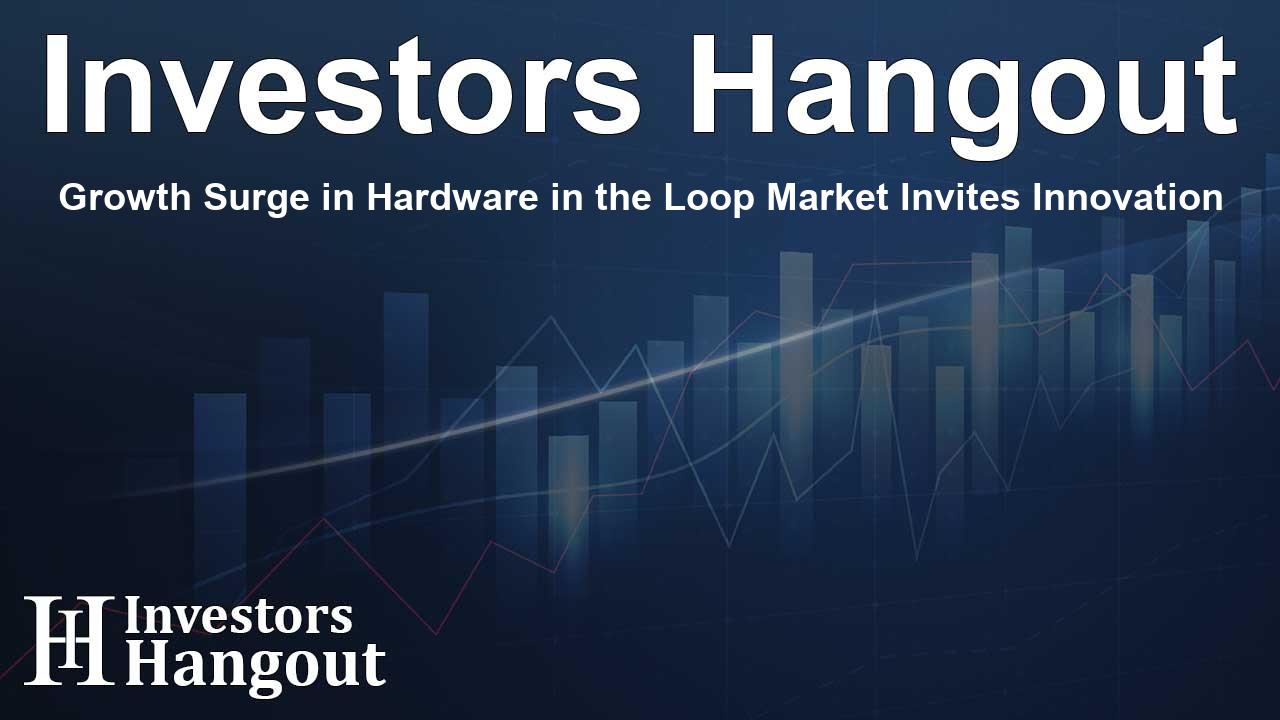Growth Surge in Hardware in the Loop Market Invites Innovation

Forecasting the Growth of the Hardware in the Loop Market
The Hardware in the Loop (HIL) market is on an impressive trajectory, projected to reach USD 1.38 billion by 2030. With an anticipated compound annual growth rate (CAGR) of 11.1%, this expansion reflects the growing need for sophisticated testing environments across various sectors, particularly electric vehicles, aerospace, and industrial automation.
Market Drivers Behind HIL Expansion
The increasing complexity of embedded systems is propelling the demand for Hardware in the Loop testing methodologies. As industries evolve, particularly in automotive and aerospace, the need for advanced validation techniques becomes paramount. HIL testing offers a solution that integrates real-time testing of electronic control units (ECUs) without the inherent risks and costs associated with physical prototypes.
Technological Innovations Fueling Adoption
Technologies such as digital twins, Artificial Intelligence (AI), and machine learning are reshaping how HIL systems validate and test product capabilities. These advanced tools enable engineers to simulate complex real-world environments, streamlining the development process. Consequently, this not only enhances product reliability but also ensures compliance with the evolving safety standards across industries.
Key Segments Within the Market
The HIL market's growth is diverse, with segments categorized by type and application. Closed-loop HIL systems, for instance, currently dominate the sector, accounting for the majority of revenue. These systems facilitate accurate simulations that are crucial for sectors such as automotive and aerospace, where high-stakes decisions depend on precise data.
Regional Insights into HIL Market Dynamics
The North American region remains a stronghold for the HIL market, contributing 33.6% to total revenue thanks to a robust automotive sector and leading aerospace firms. Meanwhile, the Asia Pacific region is projected to witness the highest growth rate, driven by rapid industrialization in countries like China and India. This geographical shift emphasizes the need for powerful HIL solutions as new automotive technologies emerge.
Segment Analysis for Key Industries
In terms of application, the automotive sector continues to lead due to its reliance on HIL for the development of advanced driver-assistance systems (ADAS) and electric vehicles. By ensuring functions such as braking systems and navigation are tested thoroughly, HIL minimizes the risk associated with new technology implementation.
Competitive Landscape and Major Players
The landscape of the Global Hardware in the Loop Market features key players, including dSPACE GmbH, Siemens, and National Instruments Corp. These companies are at the forefront, adopting strategic measures like new product introductions and collaborations to enhance their market position. Ongoing innovations and partnerships are expected to drive further advancements in HIL testing systems.
Recent Developments Highlighting Industry Growth
Recent collaborations, such as dSPACE's initiative with Microsoft to utilize generative AI in electronic control unit development, illustrate the commitment of industry leaders to leverage technology for enhancing testing protocols. These efforts not only advance the capabilities of HIL but also pave the way for more efficient and effective development processes.
Conclusion: Future of HIL in Complex Engineering
The Hardware in the Loop market is set to transform within the context of growing demands for efficient and reliable testing systems. With increased electrification and smart infrastructure investments in sectors like automotive, aerospace, and industrial automation, HIL systems are becoming vital. Their ability to provide safe, simulated environments for real-time validation is invaluable for product development cycles, ensuring that innovations are launched swiftly while maintaining high safety standards.
Frequently Asked Questions
1. What is the projected market size for HIL by 2030?
The Hardware in the Loop market is expected to reach around USD 1.38 billion by 2030.
2. Which industries are driving the growth of the HIL market?
The automotive and aerospace industries are leading the charge in HIL adoption due to their reliance on advanced testing techniques for complex systems.
3. How does HIL testing impact product development cycles?
HIL testing significantly accelerates product development by identifying issues early, reducing testing costs, and minimizing time to market.
4. What role does AI play in the HIL market?
AI enhances HIL testing by enabling real-time data analysis and simulation of complex scenarios, improving testing efficiency and accuracy.
5. Who are the main competitors in the HIL market?
Key players include dSPACE GmbH, Siemens, and National Instruments Corp, focusing on innovation and strategic partnerships to expand their market reach.
About The Author
Contact Addison Perry privately here. Or send an email with ATTN: Addison Perry as the subject to contact@investorshangout.com.
About Investors Hangout
Investors Hangout is a leading online stock forum for financial discussion and learning, offering a wide range of free tools and resources. It draws in traders of all levels, who exchange market knowledge, investigate trading tactics, and keep an eye on industry developments in real time. Featuring financial articles, stock message boards, quotes, charts, company profiles, and live news updates. Through cooperative learning and a wealth of informational resources, it helps users from novices creating their first portfolios to experts honing their techniques. Join Investors Hangout today: https://investorshangout.com/
The content of this article is based on factual, publicly available information and does not represent legal, financial, or investment advice. Investors Hangout does not offer financial advice, and the author is not a licensed financial advisor. Consult a qualified advisor before making any financial or investment decisions based on this article. This article should not be considered advice to purchase, sell, or hold any securities or other investments. If any of the material provided here is inaccurate, please contact us for corrections.
